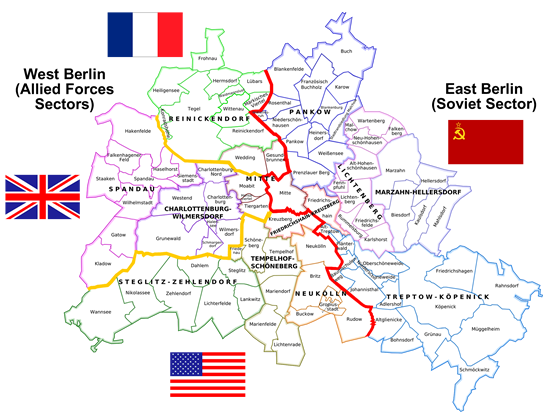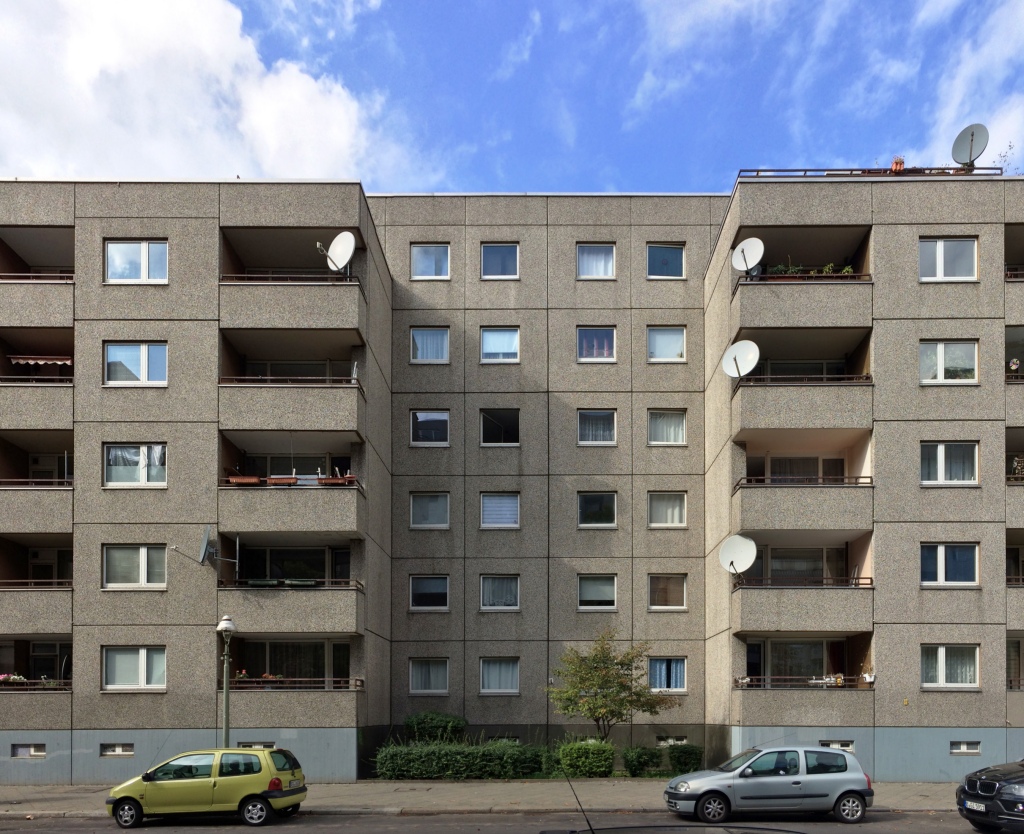This week’s lecture was about Berlin, and World War II’s huge impact on the city. In 1949, Berlin was divided into two as East and West Berlin. West Berlin was under the influence of France, Britain, and the US; and the Federal Republic of Germany (FRG) appeared in the west. East Berlin was under the rule of the Soviet Union and the German Democratic Republic (GDR) was present there. Those two different ideologies caused opposition and Berlin witnessed two different ideologies while reconstructing the city. East Berlin was designed with monumental structures, and the axes were reflecting socialism. The West was reconstructed with the help of Marshall’s aid. This division was legible in Berlin, but in 1961, the construction of the 155 km-long Berlin Wall made the division literal.

With the wall constructed, the historical center of Berlin has remained in East Berlin, so the West created a new center for the western part. And also, a new housing type appeared for that part of the city which is called Plattenbau. Plattenbau is a housing block constructed with large, prefabricated concrete slabs.

In 1989, the wall has destroyed. But the existence of the wall has created a divided city. There were two different city centers. This led the city to have a breathable environment instead of an intense texture. The divided texture of the city led people to come up with different approaches. One of the approach was the Green Archipelago concept by Oswald Mathias Ungers, Rem Koolhaas, Peter Riemann, Hans Kollhoff and Arthur Ovaska. The concept suggests to use the fragmentation of the city as the main design approach. The fragmented parts can be considered as the islands, the ‘Archipelago’s of the city. Actually, in one of our classes, we have made a presentation about this concept. I have a more detailed post about Archipelago, if you want to check it, here is the link; https://gizemkalay.wordpress.com/2019/11/29/archipelago-concept/
As we have seen in lots of cases, the crisis is the driving force for the cities to renovate themselves. This crisis had the same effect on Berlin too, but this one was a bit different from the previous cases because, in Berlin, the reconstruction of the city has shaped with the wall. The wall divided the city and after the wall, the reunited city still had its unique texture. It was interesting to see the effects of division and reunion in city planning.
